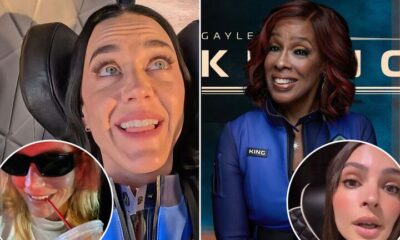Gadgets
Astronauts and aquanauts: What does the sea have to do with space?

Space and the open ocean may seem like two vastly different places, but they are more closely connected than one might think. People who have ventured to the farthest reaches of both can attest to the similarities in training and experience required, as well as the challenging environments they present.
Nicole Stott, an aeronautical engineer, astronaut, and aquanaut, has spent time in both space and underwater. She has spent 104 days in space on the Space Station and Space Shuttle, as well as time underwater, both for space travel preparation and for recreational and educational purposes now that she primarily resides on Earth.
Stott, a PADI-certified diver, confirms that the underwater and outer space environments share many similarities. Both are extreme environments that are challenging to access, dangerous, require specialized equipment, and are inhospitable to humans. The ocean serves as a valuable analog and training ground for simulating the lack of gravity and vacuum of space.
Before astronauts embark on space missions, they undergo training underwater. The Neutral Buoyancy Laboratory in Houston is a dedicated facility for this purpose. It features one of the world’s largest indoor pools, where astronauts practice spacewalks and interact with replicas of International Space Station components.

Astronauts don 300-pound suits and other equipment to achieve neutral buoyancy in the pool, simulating the weightlessness of space. They learn to operate and move as they would in space, aided by a team of support divers. Stott describes this experience as the closest simulation to moving in space that one can achieve on Earth.
In both space and underwater, individuals are floating—either due to buoyancy in water or lack of gravity in space. Neither environment allows for a casual escape; one cannot simply remove their equipment and return home.
Stott and others have also trained in the Aquarius Lab, an underwater habitat and aquanaut basecamp located 60 feet below the ocean’s surface off the Florida Keys. Spending 18 days below the surface, Stott explains that this environment mirrors the extreme conditions of space, albeit with higher atmospheric pressure. The depths of the ocean simulate the movements, teamwork, isolation, and self-reliance required in space.
Being underwater at significant depths poses risks due to nitrogen saturation in the body, which can lead to decompression illness if one ascends too quickly. This necessitates careful planning and teamwork to address any issues that may arise.
Stott emphasizes the similarities between space and underwater training, highlighting the importance of communication, teamwork, equipment usage, and emergency response. While the environments differ in terms of pressure and surroundings, the fundamental principles of survival, teamwork, and stress management remain consistent.

Stott concludes that the extreme environment of underwater training serves as the ultimate parallel to space exploration. While other forms of astronaut training exist, the challenges of deep space and deep sea require individuals to rely on themselves, work as a team, and manage stress in high-stakes situations.
Stott adds, “It presents a completely different psychological experience.”
Diver certification is not a requirement for aspiring astronauts, whether professionally or as space tourists. However, Stott mentions that if you are selected as an astronaut without prior dive experience, you will receive certification and training soon after.
For those who want to be well-prepared or simulate the feeling of being in space while on Earth, Stott is enthusiastic about facilitating that experience. Recently, she organized her second Island Astronaut Camp in collaboration with PADI and COMO Maalifushi in the Maldives. During the camp, children engaged in activities such as snorkeling, building bottle rockets, designing space suits, and learning the importance of teamwork, whether they are destined for space, staying on Earth, or exploring underwater environments. This initiative is part of her efforts to connect enthusiasts with professionals through her Space for A Better World and Space for Art Foundation.
Stott mentions, “It’s remarkable that we can spend time underwater, living and working in inner space, to better prepare for the challenges of outer space.” If you wish to experience the sensation of being in space, consider exploring underwater environments. Please rewrite the following sentence:
“The project was completed on time and within budget.”
“The project was finished according to schedule and under budget.”
-

 Destination8 months ago
Destination8 months agoSingapore Airlines CEO set to join board of Air India, BA News, BA
-

 Breaking News10 months ago
Breaking News10 months agoCroatia to reintroduce compulsory military draft as regional tensions soar
-

 Gadgets3 months ago
Gadgets3 months agoSupernatural Season 16 Revival News, Cast, Plot and Release Date
-

 Tech News12 months ago
Tech News12 months agoBangladeshi police agents accused of selling citizens’ personal information on Telegram
-

 Productivity11 months ago
Productivity11 months agoHow Your Contact Center Can Become A Customer Engagement Center
-

 Gadgets3 weeks ago
Gadgets3 weeks agoFallout Season 2 Potential Release Date, Cast, Plot and News
-

 Breaking News10 months ago
Breaking News10 months agoBangladesh crisis: Refaat Ahmed sworn in as Bangladesh’s new chief justice
-

 Toys12 months ago
Toys12 months ago15 of the Best Trike & Tricycles Mums Recommend























